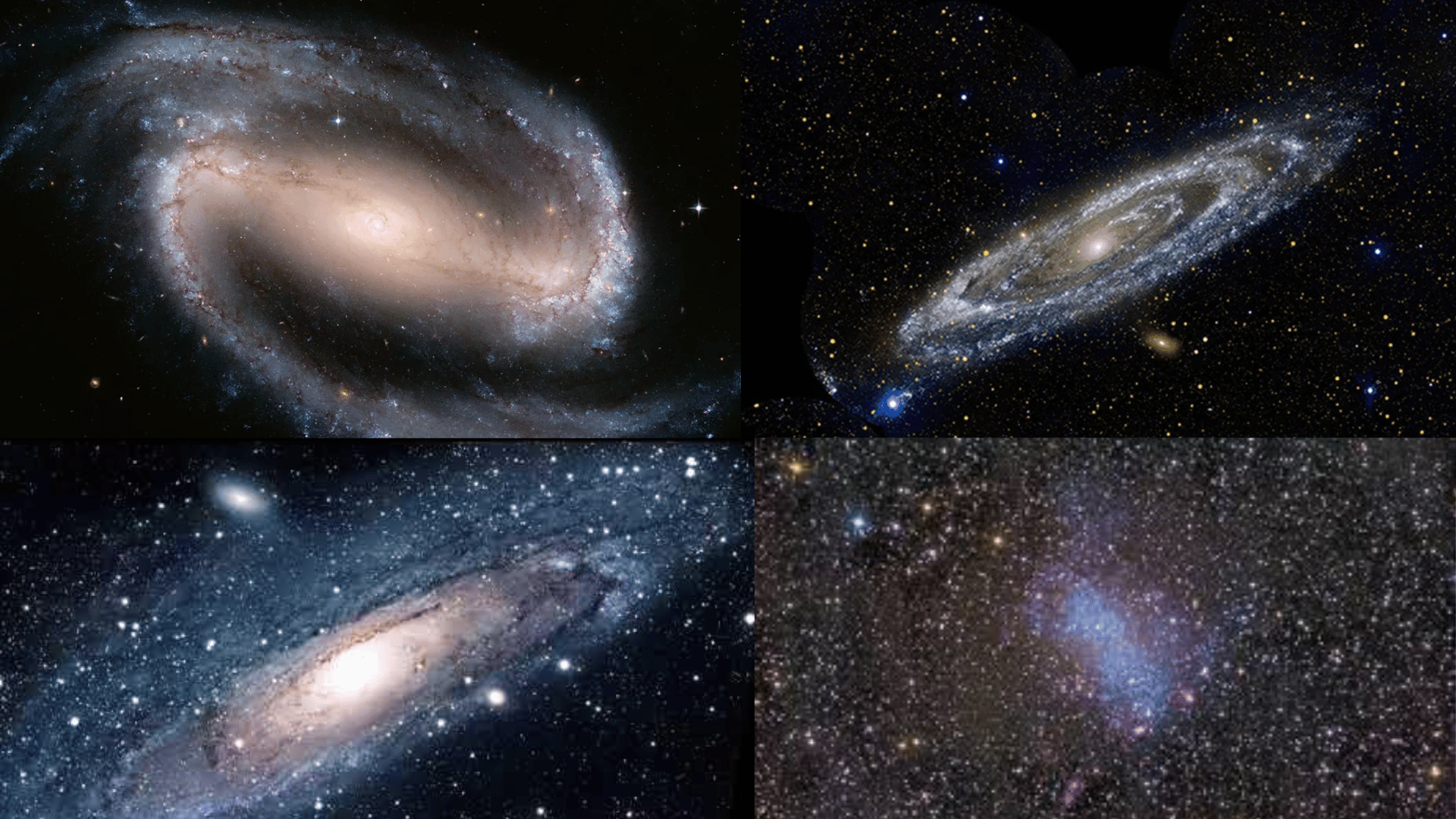The universe is filled with countless galaxies, each with its own story and shape.
Many galaxies, like spirals and ellipticals, have neat and beautiful designs that are easy to recognize.
But some galaxies look very different. These are called irregular galaxies, and they don’t follow any clear pattern.
They often look scattered, uneven, or messy, with bright stars and clouds of gas spread in random ways.
Even though they seem chaotic, studying irregular galaxies helps scientists learn how galaxies grow, change, and interact across the universe.
What Makes Irregular Galaxies Different
Irregular galaxies differ from spirals and ellipticals by lacking a defined structure. Their stars, gas, and dust are scattered unevenly, creating a chaotic, asymmetrical appearance.
This irregularity often results from gravitational interactions, collisions with other galaxies, or intense star formation bursts that alter their shape.
Rich in gas and dust, these galaxies are active star nurseries.
Because of their dynamic nature, irregular galaxies provide important insights into how galaxies form, evolve, and interact over time, helping scientists understand the changing universe.
Types of Irregular Galaxies


Image Source: Lumen Learning
Irregular galaxies come in different forms, each with unique traits that set them apart from spirals and ellipticals. Below are the main types, along with what makes each one special:
1. Irr-I Galaxies
Irr-I galaxies are the slightly more organized type of irregular galaxies. While they don’t form clear spiral arms or smooth elliptical shapes.
They often show patches of stars, gas clouds, or clusters that give them some level of visible structure. These galaxies are interesting to study because they still reveal patterns of star formation.
Scientists believe their uneven look is often the result of gravitational forces or mild interactions with nearby galaxies, shaping their irregular forms.
2. Irr-II Galaxies
Irr-II galaxies are the most chaotic and scattered type of irregular galaxy. They have no trace of symmetry, no organized arms, and no central bulge.
Instead, stars, dust, and gas appear jumbled in random directions. Their disordered appearance often comes from violent events, like collisions with other galaxies or intense gravitational pulling.
Because of their unpredictability, these galaxies are harder to classify, yet they offer valuable insight into how galaxies are torn apart and reshaped.
3. Dwarf Irregular Galaxies
Dwarf irregular galaxies may be small, but they play a powerful role in the universe. Unlike larger galaxies, they don’t follow strict patterns, yet they contain large amounts of gas and dust.
This makes them active star nurseries, where new stars are born frequently. Their small size means they are often influenced by nearby galaxies, which can distort their structure.
Despite their modest scale, dwarf irregulars are important for understanding star formation and galactic evolution.
4. Magellanic-Type Irregulars
Magellanic-type irregular galaxies are named after the Large and Small Magellanic Clouds, which orbit the Milky Way.
They show some partial structure, such as faint bars or disks, but they lack the full spiral arms seen in traditional galaxies. These galaxies are considered a bridge between spiral and irregular types.
Their mixed design makes them especially fascinating, as they highlight how galaxies can lose structure over time while still holding on to fragments of their original form
Defining Characteristics of an Irregular Galaxy


Image Source – European Southern Observatory
Irregular galaxies are marked by:
- Irregular and Asymmetrical Shapes: Without arms or bulges, stars and gas spread unevenly in an amorphous pattern.
- Active Star Formation: Bright, young stars and glowing nebulae light up these galaxies, fueled by their rich reservoirs of gas and dust.
- Mixed Stellar Populations: A combination of young, massive stars alongside older groups, often with low metallicity compared to more structured galaxies.
- Dynamic Cosmic Environments: Their shapes and features often bear the signatures of tidal forces, mergers, and gravitational influences.
How Irregular Galaxies Make Stars
Irregular galaxies are known for their busy star-making activity, offering clues about how galaxies grow. Below are the key facts about their star formation:
| Key Point | Description |
|---|---|
| Active Star Creation | Irregular galaxies are very active in forming new stars. |
| Gas and Dust Supply | They hold plenty of gas and dust for star birth. |
| Dwarf Irregulars as Factories | Many are called “star factories” for rapid star production. |
| Changing Appearance | Star formation reshapes their look over time. |
| Bright Clusters | Newborn stars form bright, glowing clusters. |
| Clues to the Universe’s History | They help reveal galaxy growth and cosmic history. |
Why Scientists Study Irregular Galaxies
Irregular galaxies offer a window into the cosmos’s past and the processes that shape it:
- They act as natural laboratories to observe how strong gravitational forces and collisions influence galaxy evolution.
- Their abundant gas and active star formation illuminate the mechanisms by which new stars are born.
- Many are found near larger galaxies, revealing how galactic interactions fuel growth and change.
- Because they resemble early galaxies, studying irregulars helps astronomers glimpse the universe’s appearance billions of years ago.
Conclusion
Irregular galaxies may look scattered and unusual, but they hold amazing clues about how the universe works.
One exciting fact about irregular galaxies is that many take shape through collisions or strong gravity.
Studying them helps scientists understand galaxy growth and the early universe. They may not look neat, but irregular galaxies show the beauty of variety in space.
Stay curious about the universe and never stop learning. New cosmic discoveries are always on the horizon.


















